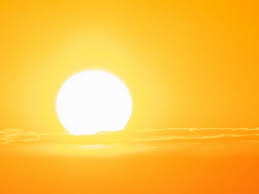Kansas Heat Wave Kills Around 10,000 Fat Cattle as Temperatures Reach over 100 Degrees Fahrenheit
Thousands of Cattle Reported Dead
About 10,000 fat cattle have died in Kansas feedlots because of the heat wave that is going on right now
Final death counts are still coming in, but livestock experts told DTN that this early estimate put the centre of those deaths in Ulysses, Kansas.DTN's calls to feedlots in the area and to ranchers whose animals were seen in photos of dead cattle that were shared privately were not answered right away.
Before these heartbreaking deaths, the temperature in the area was over 100 degrees Fahrenheit, there was humidity, and there wasn't much wind to help cool the animals down. On June 11, temperature readings in Ulysses started to come in at more than 100 degrees. On June 13, the high temperature was said to be 104 degrees, and the humidity was between 18 and 35 percent. On June 14, the temperature and humidity started to go down a bit. Highs had been in the 80s just a few days before the heat wave hit.
Corbitt Wall, a cattle analyst for National Beef Wire in Amarillo, Texas, told DTN that he heard from two sources other than the media about how bad the losses were in Kansas. He said that people were upset that the futures market went down on Monday, even though there had been so many losses.
"I know it's hard for people in business to watch that futures market, but it's not real," he said. "Those traders and speculators only make money on futures when the market is volatile and they watch these algorithms to tell them where the market is going. This is frustrating for people who follow the fundamentals."
THE KEY IS TO COOL AT NIGHT
Veterinarian A.J. said that large losses in feedlots due to heat stress seem to start every year around June. The Kansas State University Extension is where Tarpoff works. He said that when there is a "perfect storm" of too much heat and no way for the cattle to cool off at night, the heat builds up and the stress kills them. He also said that it can happen to both animals in feedlots and animals that live in the wild.
Sponsored Links:
- Wonder
Leaf CBD Oil
- Wonder Leaf
CBD Oil Reviews
- Wonder
Leaf CBD Oil USA Customer Reviews
- Wonder Leaf CBD Oil USA Reviews
Details:
https://techplanet.today/post/wonder-leaf-cbd-oil-2022
https://www.facebook.com/Wonder-Leaf-CBD-Oil-110124458422628
"Heat stress doesn't happen all at once. Cattle build up heat during the day, and it takes them four to six hours to get rid of that heat at night. As long as we have a cooling effect at night, cattle can mostly handle the heat. We run into problems when we have two to four days in a row with little nighttime cooling, and we start the day with the heat load we built up the day before still there," he said.
Before moving to Kansas, Tarpoff worked as an associate feedlot veterinarian in Canada. He talked to DTN about his work. He said that even that far north, problems with heat stress are not unusual. He also said that heat stress doesn't have the same effect on every animal in a herd, group, or pen. If the animal has had a respiratory disease in the past that left scars on its lungs, it may be hard for it to cool itself. There are also some pretty basic reasons why some cattle don't do as well in the heat.
"Historically, we start to see this in the second week of June, and I think a lot of it has to do with the hair coat. Cattle can adapt to almost any environment on earth, but they need time. At this point in the season, a lot of them haven't fully shed that winter hair coat and slicked off," he said, adding that the fact that most U.S. cows are black also means they can't cool off as well.
In the most recent reported loss, it looked like a lot of the animals were close to being taken to places that process them. They were overweight, and Tarpoff said that when this kind of fat builds up on animals, it can make them more likely to get heat stress.
HEAT STRESS PREVENTION
Even though it's not possible to stop every heat-related loss, Tarpoff said there are a few things feeders can do in the summer to help. All of them start with keeping an eye on the situation and making a plan for how to deal with the stress.
Tarpoff said that it helps to use sprinklers overnight to cool the pen floor and give the cattle more ways to get water. Shade, large mounds, and moving weeds and hay bales out of the way to let breezes through are all simple but effective ways to cool down a garden.
He said, "We can also change how we feed them." "The heat of digestion is real; it's a byproduct of fermentation. Because of this, many farms give a "heat stress ration," which is made up of foods that are easier to digest. They may also change when they feed the animals.No matter what caused this week's losses, Tarpoff said he knows the animals had to be worth a lot because they were so big when they were lost.
"The animals that have been on a farm the longest are the ones that cost the most," he said. "We've spent the most on them in terms of food, space, health care, and medicine, and we've put the most into them. When animals like that die, it's very expensive for the business."



Comments
Post a Comment